
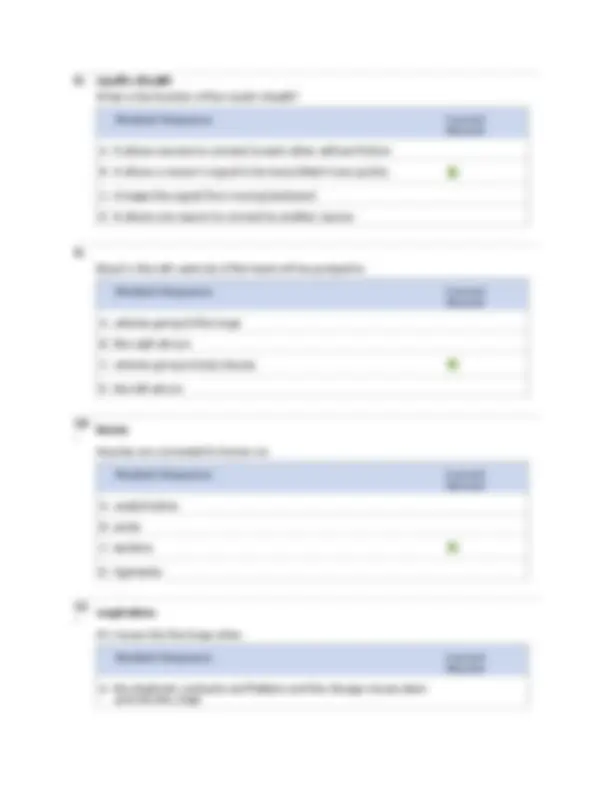
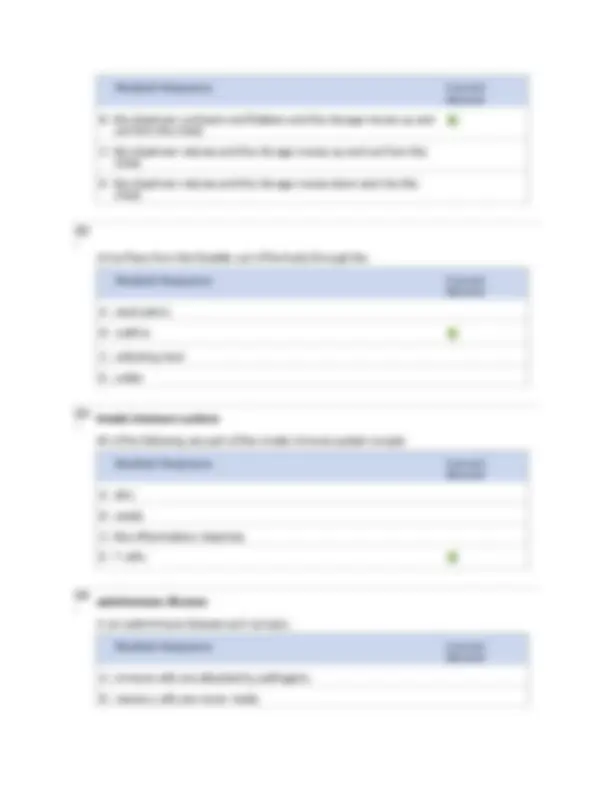
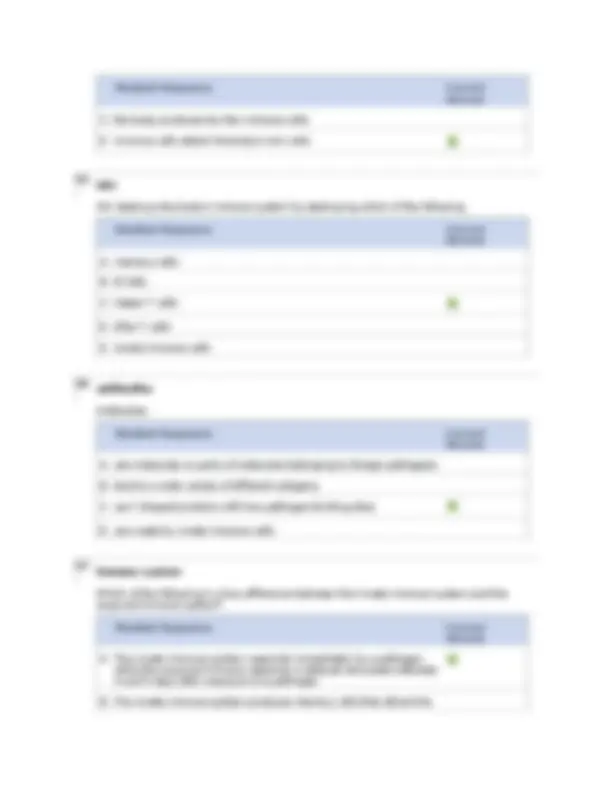
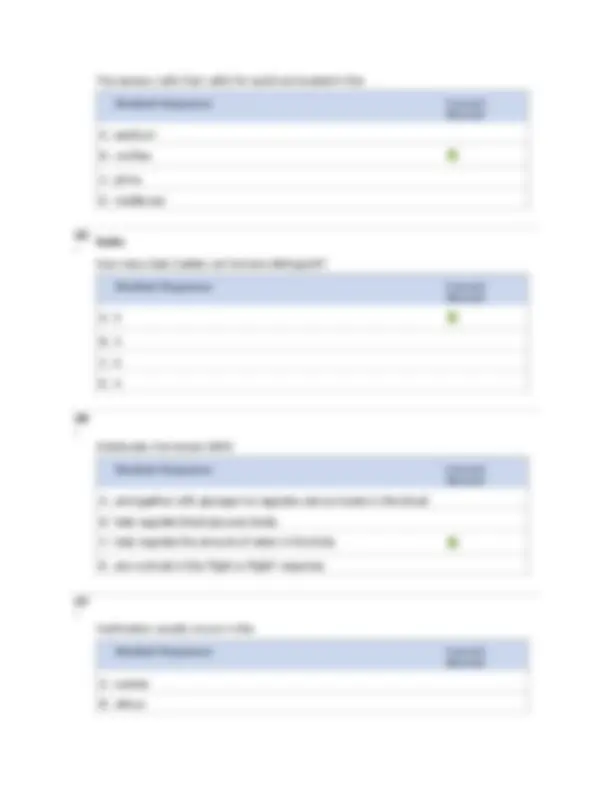
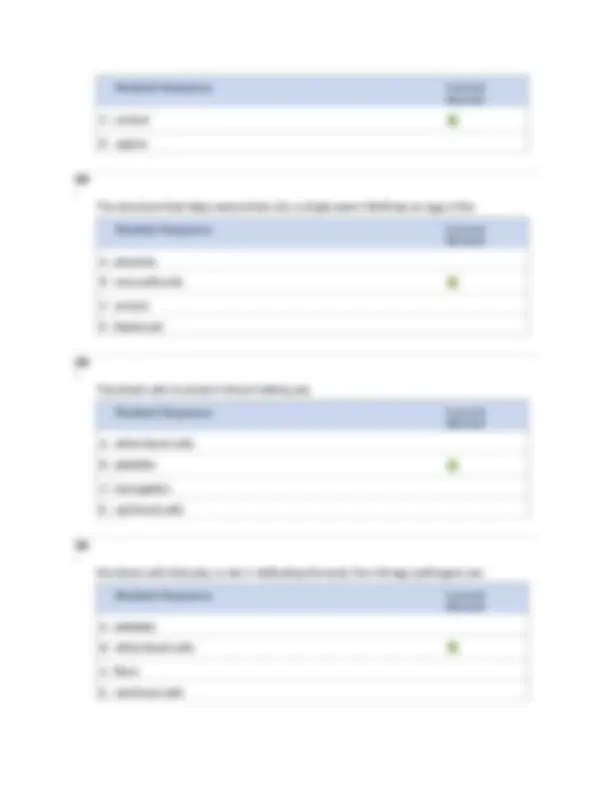
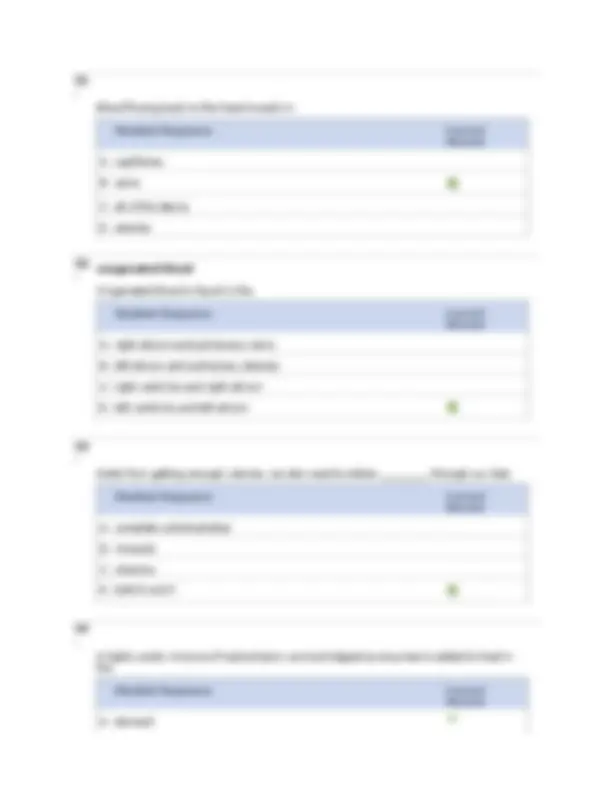


Study with the several resources on Docsity

Earn points by helping other students or get them with a premium plan


Prepare for your exams
Study with the several resources on Docsity

Earn points to download
Earn points by helping other students or get them with a premium plan
Community
Ask the community for help and clear up your study doubts
Discover the best universities in your country according to Docsity users
Free resources
Download our free guides on studying techniques, anxiety management strategies, and thesis advice from Docsity tutors
A series of biology quiz questions and answers covering topics such as blood, heart, master gland, embryo, vessels, neurons, brain, myelin sheath, left ventricle, bones, respiration, urine, innate immune system, autoimmune disease, hiv, antibodies, immune system, heart, neurons, brain parts, light sensitive cells, eye structure, taste, antidiuretic hormones, fertilization, and blood clotting.
Typology: Exams
1 / 11

This page cannot be seen from the preview
Don't miss anything!







1. blood Red blood cells are produced in Student Response Correct Answer A. compact bone B. red bone marrow C. yellow bone marrow D. spongy bone 2. heart beat Each heartbeat begins in the Student Response Correct Answer A. right ventricle B. sinoatrial node C. left atrium D. atrioventricular node 3. master gland The "master gland" that produces many hormones that control the function of other endocrine organs is tha Student Response Correct Answer A. thyroid gland B. testes or ovaries C. hypothalamus D. anterior pituitary 4. The structure that helps nourish (provides oxygen and nutrients)the embryo is the Student Response Correct Answer A. blastocyst B. placenta
Student Response Correct Answer C. amnion D. zona pellucida In which of the following vessels are materials exchanged between the blood and the body tissues? Student Response Correct Answer A. veins B. veinules C. arteries D. arterioles E. capillaries
6. neurons Which neurons carry messages from the central nervous system to other parts of the body (like muscles)? Student Response Correct Answer A. Interneurons. B. Motor neurons. C. Sensory neurons. D. All of the above. 7. brain Which part of the brain is responsible for speech and interpreting sound? Student Response Correct Answer A. the thalamus B. the cerebrum C. the cerebellum D. the brain stem
Student Response Correct Answer B. the diaphram contracts and flattens and the ribcage moves up and out from the chest. C. the diaphram relaxes and the ribcage moves up and out from the chest. D. the diaphram relaxes and the ribcage moves down and into the chest. 12 . Urine flows from the bladder out of the body through the Student Response Correct Answer A. renal pelvis B. urethra C. collecting duct D. ureter 13 . innate immune system All of the following are part of the innate immune system except Student Response Correct Answer A. skin. B. sweat. C. the inflammatory response. D. T cells. 14
. autoimmune disease In an autoimmune disease such as lupis, Student Response Correct Answer A. immune cells are attacked by pathogens. B. memory cells are never made.
Student Response Correct Answer C. the body produces too few immune cells. D. immune cells attack the body's own cells. 15 .
HIV destroys the body's immune system by destroying which of the following Student Response Correct Answer A. memory cells B. B Cells C. helper T cells D. killer T cells E. innate immune cells 16 . antibodies Antibodies Student Response Correct Answer A. are molecules or parts of molecules belonging to foreign pathogens. B. bind to a wide variety of different antigens. C. are Y-shaped proteins with two pathogen-binding sites. D. are made by innate immune cells. 17
. immune system Which of the following is a key difference between the innate immune system and the acquired immune system? Student Response Correct Answer A. The innate immune system responds immediately to a pathogen, while the acquired immune response is delayed and peaks between 3 and 5 days after exposure to a pathogen. B. The innate immune system produces memory cells that allows the
Student Response Correct Answer C. cell body D. myelin sheath 21 . Which part of the brain controls heartbeat and respiration? Student Response Correct Answer A. the brainstem B. the cerebrum C. the thalamus D. the cerebellum 22 . The most light sensitive cells in the eye (allow you to see better at night) are the Student Response Correct Answer A. cones B. cells in the organ of Corti C. rods D. hair cells 23 . Which of the following describes the path of light into the eye in the correct order? Student Response Correct Answer A. iris, cornea, pupil, retina B. cornea, pupil, lens, retina C. cornea, lens, pupil, retina D. pupil, retina, iris, cornea
The sensory cells (hair cells) for sould are located in the Student Response Correct Answer A. eardrum B. cochlea C. pinna D. middle ear 25
. taste how many basic tastes can humans distinguish? Student Response Correct Answer A. 5 B. 3 C. 6 D. 4 26 . Antidiuretic hormones (ADH) Student Response Correct Answer A. act together with glucagon to regulate calcium levels in the blood. B. help regulate blood glucose levels. C. help regulate the amount of water in the body. D. are involved in the "fight or flight" response. 27 . Fertilization usually occurs in the Student Response Correct Answer A. ovaries B. uterus
Blood flowing back to the heart travels in Student Response Correct Answer A. capillaries B. veins C. all of the above D. arteries 32 . oxegenated blood Oxigenated blood is found in the Student Response Correct Answer A. right atrium and pulmonary veins B. left atrium and pulmonary arteries C. right ventricle and right atrium D. left ventricle and left atrium 33 . Aside from getting enough calories, we also need to obtain __________ through our diet. Student Response Correct Answer A. complete carbohydrates B. minerals C. vitamins D. both B and C 34 . A highly acidic mixture of hydrocholoric acid and digestive enzymes is added to food in the Student Response Correct Answer A. stomach
Student Response Correct Answer B. mouth C. large intestine D. small intestine 35 . digestive enzymes All of the following contain digestive enzymes except Student Response Correct Answer A. saliva B. gastric juice C. bile D. all of the above contain digestive enzymes 36
. water absorption Most of the water absorbed by the digestive syatem is absorbed in the Student Response Correct Answer A. large intestine B. anus C. small intestine D. stomach E. mouth